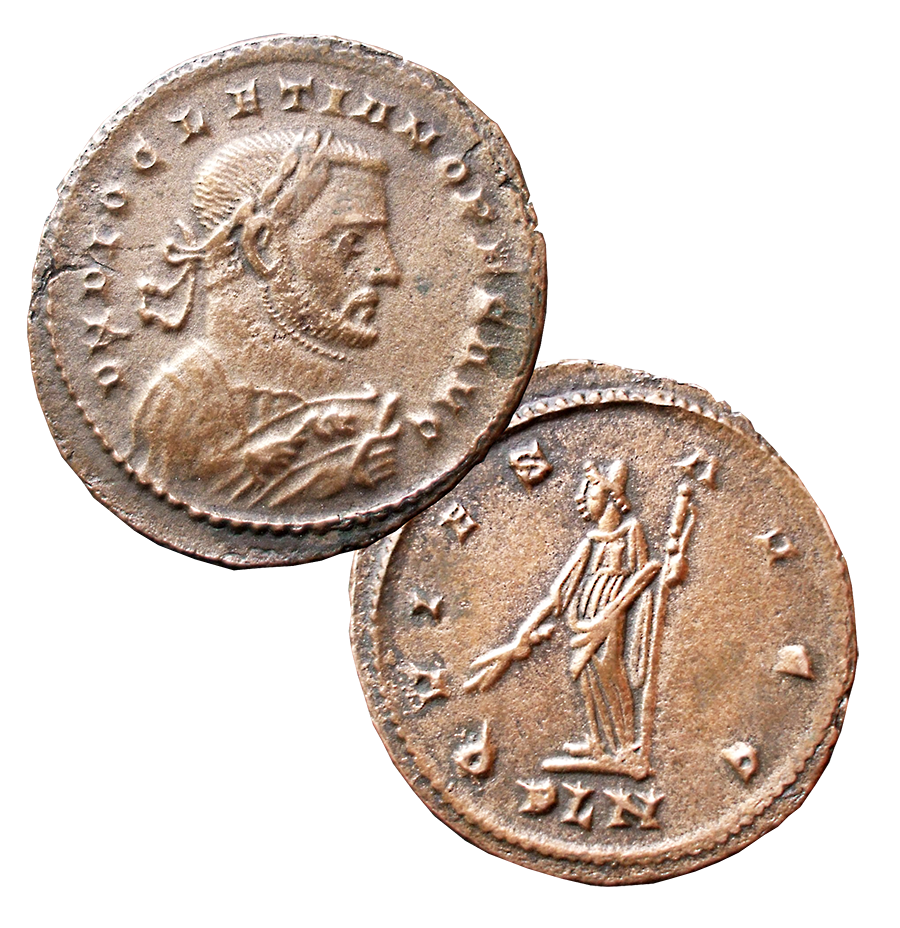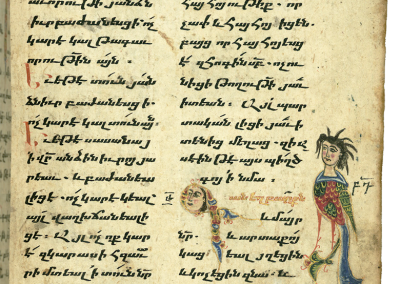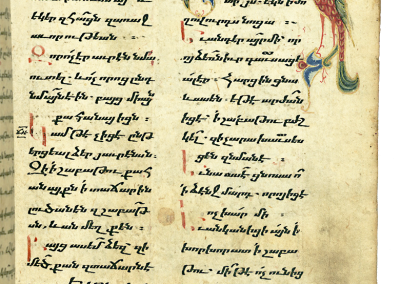
Bible, History, Archaeology
Bible,
History,
Archaeology
Armenian Orthodox Church
Presentation
Armenia first embraced Christianity around the beginning of the 4th century (the exact date is still debated). Under the impetus of its pagan king Tiridate IV (298-330) and Gregory the Illuminator, once persecuted by the latter, whom he led to the Christian faith, Armenia probably became the world's first Christian state. However, an ancient tradition (legend?) affirms that Armenia was in contact with Christianity as early as the 1st century, through the intermediary of two of the Twelve Apostles, Bartholomew and Thaddaeus (Matthieu 10,2-3; Marc 3,16-19, etc.).

Throughout the 19th century, during and after the First World War, the local Armenian community grew. Before 1939, there were over 1,000 members, making it the third largest Christian group. Today, the community numbers between 2,500 and 3,000, living in the Armenian quarter of Jerusalem, as well as in Haifa, Jaffa, Ramallah, Bethlehem and Amman, Jordan.
Image opposite The Armenian cross at the entrance to St. James's Cathedral in Jerusalem's Armenian Quarter. © John SY Lee.

Diocletian, Roman emperor from 284 to 305.
He unleashed a wave of persecution against Christians during the last 15 years of his reign.
In 298, he installed Tiridate IV on the Armenian throne.
Follis* of Diocletian.
Obverse in a consular gown and designated as DN (Dominus Nostrum),
Revers: Quies, Diocletian's retreat to Spalato (Split, Croatia).
Maxime Cambreling.
* The follis (plural : crazy) is a bronze coin introduced into the Roman Empire around 294, during Diocletian's monetary reform.
 General history of the Armenians
General history of the Armenians
– 301 : adoption of Christianity by royal decree. Orientalist Jean-Pierre Mahé suggests 313.
– 403 : creation of the Armenian alphabet (opposite) and Bible translation.
- 428-654: Persian and Byzantine domination.
- 654-884: Arab domination.
- Late 9th-11th centuries: Armenian kingdoms of the Bagratouni and Arzrouni.
- 1064: fall of the kingdom of Ani and beginning of Seljuk Turkish domination.
- 1080-1375: Kingdom of Cilicia or «Little Armenia».
- From 1502: Persian and Ottoman domination.
- 1828: annexation of Eastern Armenia by Russia.
– 1915-1916 : Armenian genocide of the Ottoman Empire.
- 1918: First Republic of Armenia.
- 1921: Sovietization of Armenia.
- 1991: independence and the Second Republic of Armenia.
Image opposite The Armenian alphabet. One of only 25 alphabets in use worldwide.
Armenian poet Parouir Sévak (Armenian Պարույր Սևակ) (1924-1971) wrote:
«We are few, but we are called Armenians. True, we represent just over one thousandth of the world's population, but our original alphabet is one of only 25 in use worldwide. It is undoubtedly this extraordinary cultural richness of having our own alphabet that makes Armenian culture so unique. A particularism that is a force for difference in a globe prone to globalization and the standardization of lifestyles and cultures.»
The Armenian language and alphabet

Armenia, which had already been officially Christian for more than a century, had to read the sacred books in Greek or Syriac, which were incomprehensible to a large part of the population. According to the story, the learned monk, with the agreement of the king and the patriarch, experimented with a system of notation existing in Syria, then invented his own characters while in Edessa. He then had the design refined by a Greek calligrapher and grammarian by the name of Hropanos.
On his return to Armenia, he translated all the Books of the Bible with the help of two of his disciples, Voyhan and Yovsep.
Armenian specialists consider it established that there were two successive translations of the Scriptures into Armenian: the first was a hasty translation undertaken before the Ecumenical Council of Ephesus in 431; the second, a major revision made on the basis of the «sure, faithful and authentic» manuscripts brought back from Constantinople by the Armenian delegation to the Council of Ephesus.
A study of the relationship between the Classical Armenian translation of the Bible and Syriac leads us to conclude that there are important vestiges of Syriac in the text of the Old Armenian translation of the Bible.
Image opposite : Armenian introduction to the Gospel of Matthew.
Manuscript MS W.540 executed in 1475 by Aristakes for a priest named Hakob. It contains a series of images introducing the text of the Gospels. The style of these miniatures is typical of 15th-century manuscript production in the Lake Van region, located in Turkey's easternmost Armenian highlands. Numerous inscriptions (on fol. 258-260) spanning several centuries testify to the manuscript's long history of use. This precious codex features a silver binding and cover set with semi-precious stones, dating from around 1700 © The Walters Art Museum, Baltimore, Maryland, USA.
Three other pages from the same manuscript are shown in the image gallery below.
The Armenian language today
Having survived the Christian era, Armenian is still a living language spoken by seven million people worldwide. Closely related to Greek, Armenian has borrowed a significant lexical stock from Persian (Iranian). But it also absorbs Turkish, French, Latin and Russian words. The modern language retains a rare continuity with the language of the 5th century.
An introductory page in Armenian from the Gospel of Matthew. Manuscript MS W.540 executed in 1475 by Aristakes for a priest named Hakob. It contains a series of images introducing the text of the Gospels. The style of these miniatures is typical of 15th-century manuscript production in the Lake Van region of Turkey's eastern Armenian highlands.
An introductory page in Armenian from the Gospel of Matthew. Manuscript MS W.540 executed in 1475 by Aristakes for a priest named Hakob.
An introductory page in Armenian to the Gospel of Luke Manuscript MS W.540 executed in 1475 by Aristakes for a priest named Hakob. It contains a series of images introducing the text of the Gospels. The style of these miniatures is typical of 15th-century manuscript production in the Lake Van region, located in Turkey's easternmost Armenian highlands. The Walters Art Museum in Baltimore, Maryland, USA.
An introductory page in Armenian from the Gospel of Luke. Manuscript MS W.540 executed in 1475 by Aristakes for a priest named Hakob.
An introductory page in Armenian from the Gospel of Matthew. Manuscript MS W.540 executed in 1475 by Aristakes for a priest named Hakob. It contains a series of images introducing the text of the Gospels. The style of these miniatures is typical of 15th-century manuscript production in the Lake Van region, located in Turkey's easternmost Armenian highlands. The Walters Art Museum in Baltimore, Maryland, USA.
An introductory page in Armenian from the Gospel of Matthew. Manuscript MS W.540 executed in 1475 by Aristakes for a priest named Hakob.
Jerusalem's Cathedral of St. James (Armenian: Սրբոց Յակոբեանց Վանք Հայոց) is located within the precincts of the St. James Monastery in the Armenian Quarter of Jerusalem's Old City.
Jerusalem's Cathedral of St. James (Armenian: Սրբոց Յակոբեանց Վանք Հայոց) is located within the precincts of the St. James Monastery in the Armenian Quarter of Jerusalem's Old City.

 General history of the Armenians
General history of the Armenians


